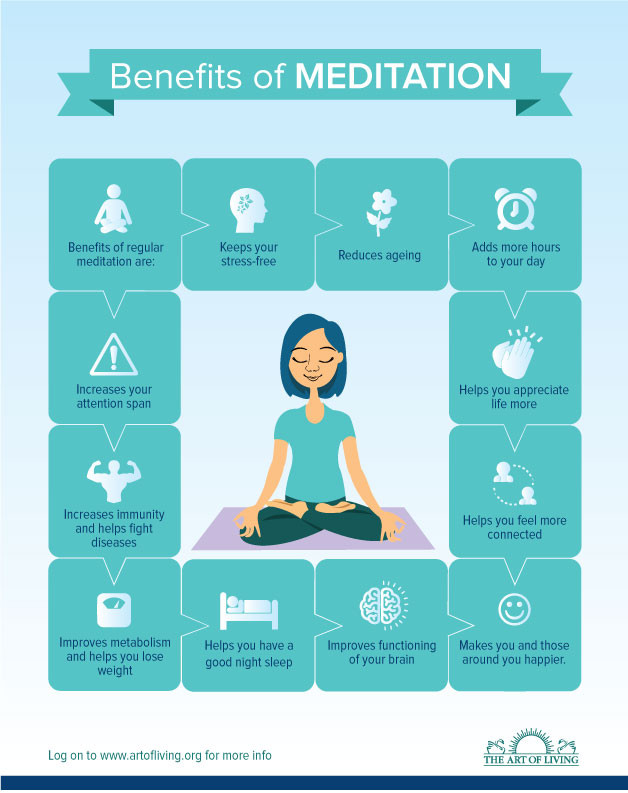
The Calm app is a free resource for teachers. It offers mindfulness activities for 30 days and a selfcare guide that teaches you the basics of mindfulness. Teachers can also join the program for a free week. You will also find tips and other suggestions for incorporating mindfulness into your classroom. It's a great tool to integrate mindfulness into the classroom. Visit Calm to learn more.
Calm is available for teachers at no cost. Sign up on the website by filling out the short form. After you are approved, unlimited access will be granted to guided meditations. You will also get best practices and tips to help you incorporate mindfulness into your classroom. You can even download the Calm Kids app to use with students. It is compatible with many browsers and devices. The app is free and available on Google Play and Apple's App Store.

Calm offers great content, including mini-courses and meditations for toddlers. It offers family stories and classic stories. You can also download Calm for your own personal use. It's also accessible for those with sight impairments, but the app doesn't have a picture-based interface. Installing a screen reader is an option for visually impaired users. This will allow you to read the text and not see any pictures.
Calm offers teachers a free subscription. Calm's premium editions are available to anyone over 13 years of age. You can sign-up for the free trial by signing up as long as you're not under 13. Go to the "Discover” Hub and find the meditation that appeals most to you. So you can pick the one that is most suitable for your needs. This app is available for free to teachers in Australia, Canada and the US.
Calm is available for teachers free of charge, but the premium version includes additional features. You can find breathing techniques and meditation courses in the area. There are also meditation classes and courses for advanced and intermediatemeditators. For beginners, you may want to subscribe to a paid membership. Although this may be a great deal, it isn't for everyone. Calm may not be right for everyone. Before you sign up, however, it is important to determine if Calm is the right fit.

Teachers can use the Calm app for free, but there are some restrictions. The app does not allow teachers make changes to the curriculum. You can't alter your curriculum if a teacher is not present. It's important to stay positive in order to keep kids calm and focused. Teachers can download this app for free, making it an excellent option.
FAQ
How do I count calories?
Perhaps you are wondering what the best diet is for you. or "is counting calories necessary?" The answer to this question depends on many factors, including your current health, your personal goals and preferences, as well as your overall lifestyle.
The Best Diet For Me: Which One Is Right?
The best diet for me depends on my current health status, my personal goals, my preferences, and my overall lifestyle. There are many options, both good and bad. Some are better for certain people than others. What should I do? How do I make a good decision?
These are the questions this article will answer. The article starts by introducing the many types of diets currently available. Next, we'll discuss the pros and cons for each type of diet. Then, we will discuss which diet is the best.
Let's look at some of the main types of diets to get started.
Diet Types
There are three main types: low-fat, high-protein, or ketogenic. Let's briefly discuss them below.
Low Fat Diets
A low-fat diet restricts fat intake. This is done by reducing your intake of saturated oils (butter, cream cheeses, etc.). They are replaced by unsaturated fats such as avocados, olive oil, and cream cheese. For those looking to lose weight quickly, a low-fat diet is often recommended. However, this kind of diet may cause problems such as constipation, heartburn, and indigestion. In addition, it may lead to vitamin deficiencies if a person doesn't get enough vitamins from their food.
High Protein Diets
High protein diets reduce carbohydrates to favor of proteins. These diets typically have more protein than other diets. They are meant to help build muscle mass and burn more calories. They may not be able to provide sufficient nutrition for people who need it. They may also be too restrictive and not suitable for everyone.
Ketogenic Diets
Also known as keto diets, ketogenic diets are also called keto diets. They are high fat and moderately carbohydrate and protein-rich. They are typically used by athletes and bodybuilders because they allow them to train harder and longer without getting tired. But, they require strict adherence to avoid negative side effects like nausea, headaches, and fatigue.
What is the best diet for me?
The best diet for you depends on several factors, like your age, gender, weight, health conditions, and lifestyle habits. Also, consider your energy expenditure, whether you prefer low-calorie food, and whether you enjoy eating fruits or vegetables.
Intermittent fasting might be an option for you if your goal is to lose weight. Intermittent fasting allows you to consume only certain meals per day, instead of eating three large meals. This method may work better than traditional diets which include daily calorie counts.
Research suggests that intermittent fasting may increase insulin sensitivity and lower inflammation. This can result in a reduction in blood sugar levels and a reduced risk of developing diabetes. Intermittent fasting has been shown to promote fat loss as well as improve overall body composition.
Increase immunity with herbs or supplements
Natural remedies and herbs can be used to increase immune function. You can use ginger, garlic, echinacea oregano oil and vitamin C as examples.
These herbal remedies shouldn't be considered a replacement for medical treatment. Side effects can include nausea, dizziness, stomach cramps and dizziness.
What's the difference of a calorie versus a Kilocalorie?
Calories measure the energy content of food. A calorie is a unit of measure. One calorie represents the energy required to raise one gram of water's temperature by one degree Celsius.
Kilocalories refer to calories in another term. Kilocalories equal one thousandth of a calorie. 1000 calories, for example, equals one kilocalorie.
What is the difference of a virus from a bacteria?
A virus can be described as a microscopic organism that cannot reproduce in another cell. A bacterium (or single-celled organism) reproduces by splitting itself into two. Viruses have a very small size (about 20 nanometers), while bacteria is larger (up to one micron).
Viruses are usually spread through contact with infected bodily fluids, including saliva, urine, semen, vaginal secretions, pus, and feces. Bacteria can easily be spread from direct contact to contaminated surfaces and objects.
Viruses may enter the body through cuts, scrapes. bites, or any other break in the skin. They can also enter the body through the mouth, nose, eyes and ears, vaginal, rectum or anus.
Bacteria may enter our bodies through cuts and scrapes on our skin, burns, insect bites, and other wounds. They may also be introduced into our bodies through food and water as well as soil, dirt, dust, and animals.
Both bacteria and viruses can cause illness. But viruses can't multiply within their hosts. They only cause disease when they infect living tissue.
Bacteria can multiply within their hosts and cause illness. They can also invade other parts of your body. That's why we need antibiotics to kill them.
Is being cold good for your immune system.
Cold can make you less immune to infection because your body makes fewer white blood cells, which are essential for fighting infections. You will feel less pain if you are cold.
Statistics
- WHO recommends consuming less than 5% of total energy intake for additional health benefits. (who.int)
- According to the 2020 Dietary Guidelines for Americans, a balanced diet high in fruits and vegetables, lean protein, low-fat dairy and whole grains is needed for optimal energy. (mayoclinichealthsystem.org)
- WHO recommends reducing saturated fats to less than 10% of total energy intake; reducing trans-fats to less than 1% of total energy intake; and replacing both saturated fats and trans-fats to unsaturated fats. (who.int)
- nutrients.[17]X Research sourceWhole grains to try include: 100% whole wheat pasta and bread, brown rice, whole grain oats, farro, millet, quinoa, and barley. (wikihow.com)
External Links
How To
What does the word "vitamin" mean?
Vitamins are organic substances found naturally in food. Vitamins help us absorb nutrients from foods we eat. Vitamins cannot come from the body so food must provide them.
There are two types if vitamins: water soluble, and fat soluble. Water-soluble vitamins dissolve in water easily. You can find vitamin C,B1 or thiamine, B2 or riboflavin and B3 or niacin, B3/niacin, B6/pyridoxine, folic Acid, biotin and pantothenic Acid as examples. Fat soluble vitamins are stored in the liver and fatty tissue. Vitamin D, E, K and A are some examples.
Vitamins are classified according their biological activity. There are eight major vitamin groups:
-
A - vital for healthy growth.
-
C is important for nerve function and energy production.
-
D - Essential for healthy teeth and bones.
-
E is necessary for good vision, reproduction.
-
K - Essential for healthy muscles and nerves.
-
P - Essential for strong bones and teeth.
-
Q - Aids digestion and iron absorption
-
R - necessary for making red blood cells.
The recommended daily intake (RDA), of vitamins varies with age, gender and physical condition. RDA values are set by the U.S. Food and Drug Administration (FDA).
For example, the RDA for vitamin A is 400 micrograms per dayfor adults 19 years or older. Pregnant mothers need 600 micrograms per days because it is vital for the development and growth of their baby. Children ages 1-8 require 900 micrograms per day. Children under 1 year old require 700 micrograms daily, while infants over one year old need 500 micrograms every day. This decreases between 9 and 12 months.
Children between the ages 1--18 years old who are overweight or obese require 800 micrograms per Day, while those who are overweight or obese need 1000 micrograms. To meet their nutritional needs, children underweight and obese require 1200 micrograms a day.
Children between 4 and 8 years old with anemia will need 2200 micrograms daily of vitamin C.
2000 micrograms is the minimum daily intake for adults over 50 years old to maintain good health. Because of their higher nutrient needs, women who are pregnant or nursing need 3000 mg per day.
1500 micrograms are required daily by adults over 70 because they lose approximately 10% of their muscle each decade.
Women who are pregnant and lactating need more nutrients than the RDA. Pregnant mothers need 4000 micrograms per daily during pregnancy and 2500 after giving birth. Breastfeeding mothers need 5000 micrograms per day when breast milk is being produced.